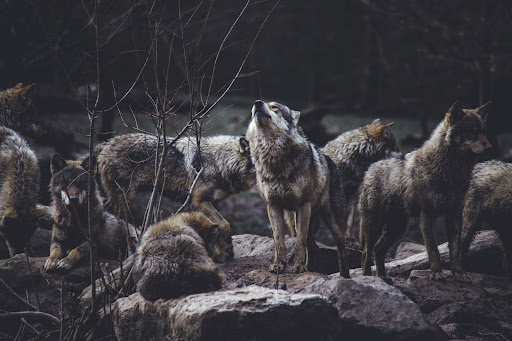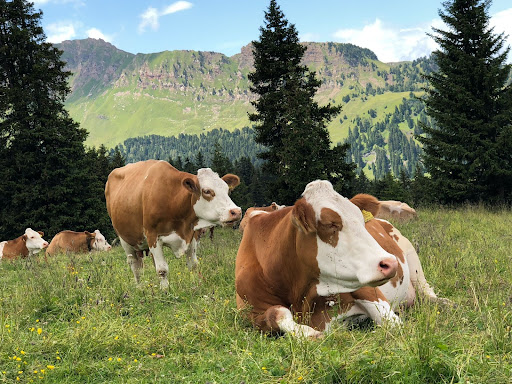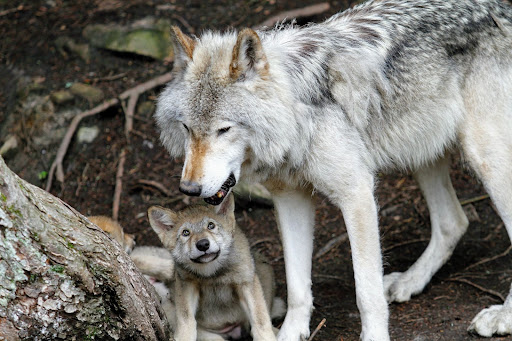
Last year, Colorado voted to reintroduce wolves into the state’s forests.The narrowly-passed Proposition 114 was the first time a state’s voters have forced their government to re-introduce an imperiled species. The proposition directed Colorado Parks and Wildlife to develop a plan to reintroduce an undetermined number of gray wolves into the state, west of the Continental Divide, by the end 2023. This week we have seen the first wolf-related livestock fatality in over 70 years. The Colorado Cattlemen’s Association says a 500-pound heifer was found dead in Walden after being attacked and eaten by a pack of wolves. Colorado Parks and Wildlife is aware of the report and actively investigating, according to a spokesperson. “If it is determined to be caused by the wolves that have naturally migrated into the state, we will compensate the landowner through the current game damage program,” said Rebecca Ferrell, a Colorado Parks and Wildlife spokesperson.
Will Wolves Continue to be an Issue for Farmers?
This is the question Colorado farmers and other raisers of livestock are asking themselves. Especially since gray wolf puppies were already seen in Colorado this year, now we see this attack on livestock. This unfortunate incident shows us several issues that must be addressed by the Wolf Restoration and Management Plan, including methods for conflict minimization and a funding source to “fairly provide the needed tools for prevention and compensation from wolf impacts.” The Colorado Cattlemen’s Association said it’s encouraging Colorado Parks and Wildlife, and other wolf-related working groups, to “consider this wolf attack and the widespread impacts as a sentinel example of how livestock can be impacted by wolf introduction.” Wolves are not the only big predator that could potentially threaten livestock in Colorado.

How Can You Keep Your Livestock Safe?
Predators that threaten livestock are often more intelligent than farmers would like them to be. According to Hobbyfarms.com, there are a number of options for predator control, exclusion and removal on your farm. From building fences to adding a donkey to the mix, there are predator control options for everyone. Here are some of the options they list for predator control.
1. Exclusion
The first place to start is preventing predation because once a predator establishes a pattern of attack, it’s difficult to break. Fencing is a farmer’s best friend in this case, and there are many types to choose from: Tall, woven-wire fencing buried partly in the ground will prevent predators from jumping over and burrowing under. An electric strand at the top will keep raccoons and opossums, which love to climb, from getting over. High-tensile, electric-wire fencing with strands spaced 6 inches at the bottom graduating to 12 inches at the top so predators cannot squeeze through is another option. If you keep your smaller livestock in a small, fenced lot, you could potentially put a mesh fence overhead.
2. Guardian Animals
Properly socialized guard dogs, donkeys and llamas can be effective predator protection. Dogs are useful for land-based and aerial predators, but could “become friends” with other dogs preying on your animals. Donkeys and llamas are useful against dogs and coyotes. However, if you live in an area with a large presence of wild dogs or coyote packs, your llama or donkey could become prey to them. Each farming situation needs to be considered individually.
3. Removing Attractants
Predatory animals are attracted to your farm for more than just your livestock. Keep your property clean so they have one less reason to visit. Leaving things like eggs, meat, and dairy in your compost pile can attract predators. Keep food for pets and livestock properly put away. Clean up the area properly after animals die or give birth. Lastly, keep small livestock in a confined predator proof area at night if possible.
4. Lethal Force

Before taking lethal action against a predator on your farm, consider the legal and ecological implications. Predators such as hawks, owls and wolves are often protected species and cannot be harmed or killed. Other predators, such as bears, might require a permit for hunting. Even the less endangered animals causing problems on your farm still have a role in the ecosystem. Removing them from an area can invite other predators to move in or growth of pest species that they prey on, such as rats and mice. If you believe lethal force is your only choice for predator removal, first be sure you can legally hunt the animal, and get the proper licenses. If you are in Colorado, you can contact Colorado Parks and Wildlife for instruction on how to deal with an excessive predator problem. If you are not in Colorado, work with your local wildlife management especially if your predator problem is more than you can handle.
Colorado Parks and Wildlife will continue to assist the public with any issues concerning local predatory wildlife, including wolves. It is hard to find a balance between humans and animals, especially when both are simply trying to survive. Have you had issues with large predators on your farm? Do you believe reintroducing wolves to Colorado was beneficial? Reintroducing wolves to Colorado could understandingly be seen as bittersweet. However, with the right precaution humans and predatory animals, such as wolves, can live side by side.
Written by: Erinn Malloy
